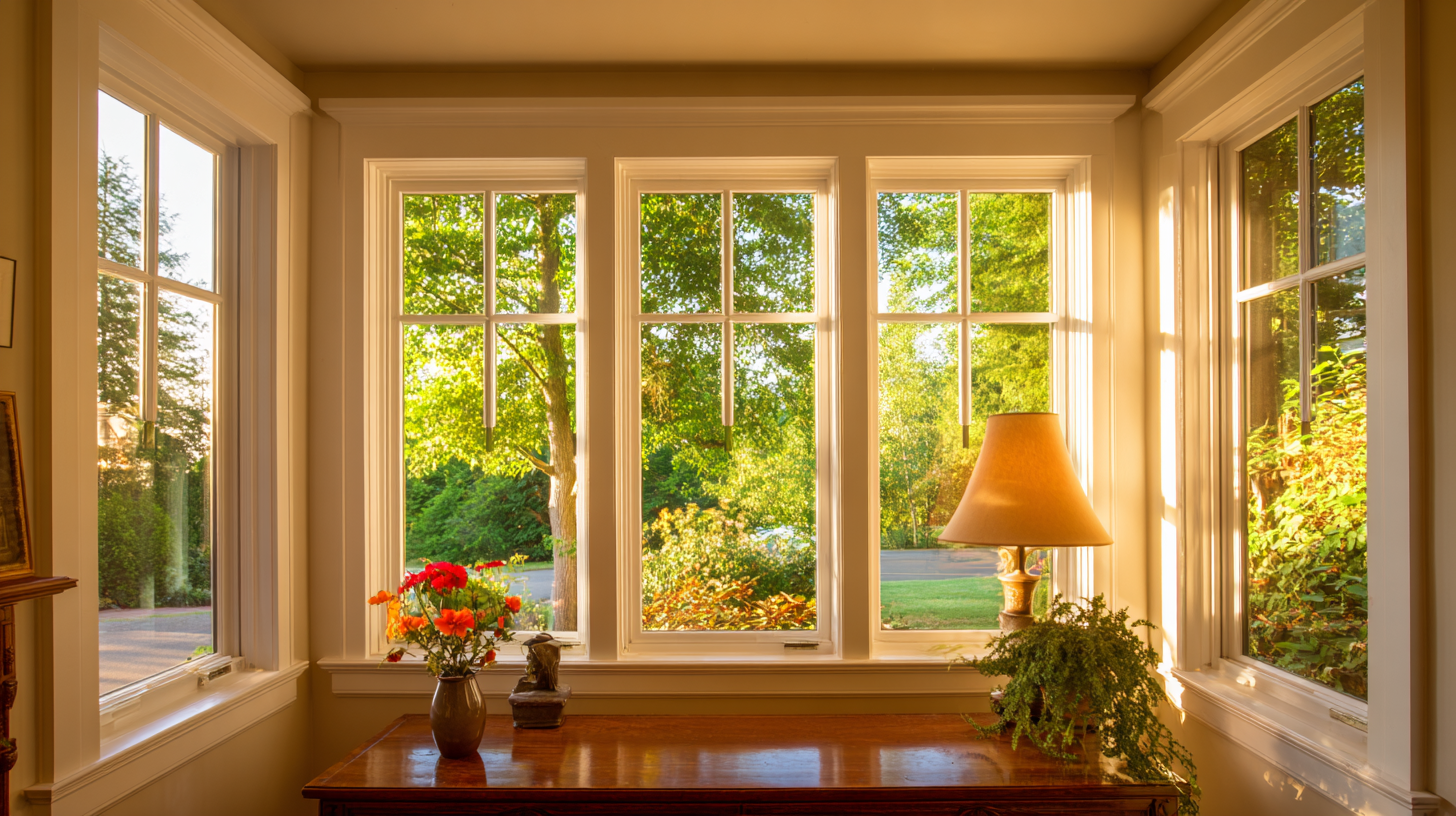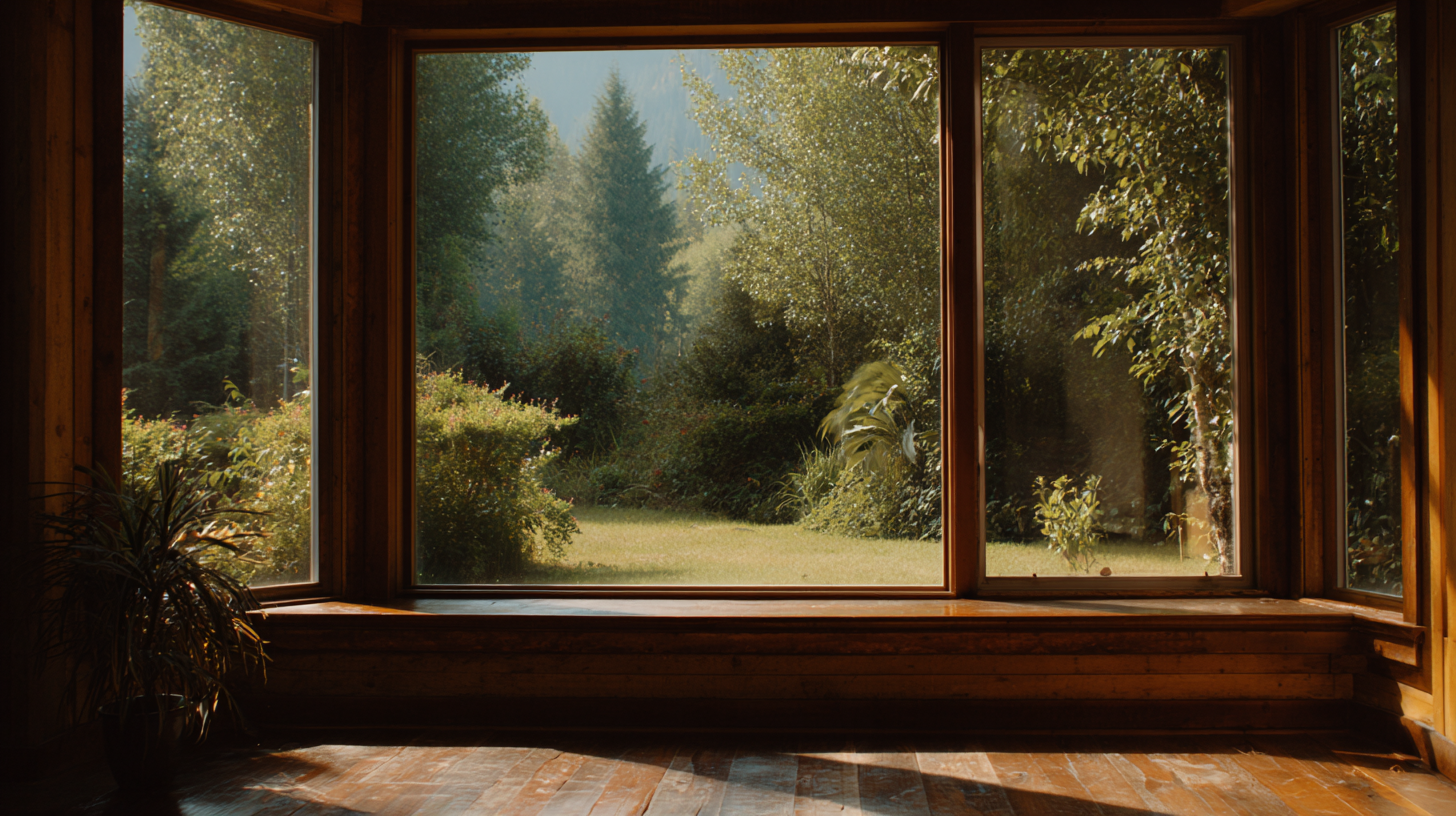7 Expert Tips to Choose the Best Value Windows for Your Home
When it comes to enhancing the energy efficiency and aesthetic appeal of your home, choosing the best value windows is crucial. According to the American Energy Association, approximately 30% of a home's heating energy can be lost through inefficient windows, leading to higher energy bills and a larger carbon footprint. Furthermore, a study by the National Association of Home Builders indicates that homeowners can recover up to 70% of their investment in new windows upon resale, highlighting their long-term value. With such significant impacts on comfort, savings, and property value, selecting the right windows can be daunting. This blog will provide seven expert tips to guide you in choosing the best value windows for your home, ensuring that your investment not only meets your aesthetic needs but also delivers lasting energy efficiency and cost-effectiveness.

Understanding Your Window Needs: Functionality and Aesthetics
When choosing windows for your home, it's essential to understand your specific needs regarding both functionality and aesthetics. Windows serve not only as essential openings for light and air but also as significant components of your home's overall design. According to recent market trends, the window treatment segment, which includes options like blinds and shades, is projected to grow substantially, reaching a market value of $5.85 billion by 2033, highlighting the increasing importance of aesthetic value in home design.
Tip 1: Prioritize energy efficiency when selecting windows that align with modern trends. Energy-efficient windows can significantly reduce heating and cooling costs while contributing to a more sustainable home environment. Look for options with low U-factors and solar heat gain coefficients for optimum performance.
Tip 2: Consider the styling of your windows in relation to your home's architecture. Whether you prefer the sleek lines of contemporary designs or the charming appeal of traditional styles, the way your windows look can enhance your home's curb appeal. Ensure that your window selection complements not only the interior decor but also the exterior aesthetics, providing a harmonious look.
By understanding these needs, you can make informed decisions that deliver both functional advantages and visual appeal, ultimately enhancing the value and enjoyment of your living space.
Comparing Window Materials: Pros and Cons Explained
When choosing the best value windows for your home, it's crucial to understand the different materials available, each with its own set of pros and cons. Common materials include vinyl, wood, aluminum, and fiberglass. Vinyl windows are often praised for their affordability and low maintenance requirements, while wood windows provide superior aesthetic appeal but require more upkeep. Aluminum windows are durable and resistant to rust, but they might not offer the same level of insulation. Fiberglass windows, though more expensive, present a great balance of strength and energy efficiency.

Recent incidents have highlighted the importance of proper window installation and material selection. For instance, a case in Nanchang involved fatalities due to poorly installed glass windows that could not withstand strong winds. This tragedy underlines the significance of opting for quality materials and professional installation. Furthermore, innovative products like smart windows, which can change color or opacity to regulate indoor temperatures, showcase how modern advancements in window technology can enhance energy efficiency, offering both comfort and savings in the long run.
Energy Efficiency Ratings: What to Look For in Windows
 When selecting new windows for your home, understanding energy efficiency ratings is crucial for making an informed decision. Look for the National Fenestration Rating Council (NFRC) label, which provides essential information on the window's overall energy performance. Key metrics include the U-factor, Solar Heat Gain Coefficient (SHGC), and Visible Transmittance (VT). The U-factor indicates how well the window insulates against heat loss, with lower numbers signifying better insulation. For climates needing cooling, a low SHGC can help keep your home cooler by reducing solar heat gain.
When selecting new windows for your home, understanding energy efficiency ratings is crucial for making an informed decision. Look for the National Fenestration Rating Council (NFRC) label, which provides essential information on the window's overall energy performance. Key metrics include the U-factor, Solar Heat Gain Coefficient (SHGC), and Visible Transmittance (VT). The U-factor indicates how well the window insulates against heat loss, with lower numbers signifying better insulation. For climates needing cooling, a low SHGC can help keep your home cooler by reducing solar heat gain.
Additionally, pay attention to the Energy Star certification, which signifies that a window meets strict energy efficiency guidelines set by the EPA. This certification ensures that the windows will not only help in lowering your energy bills but also enhance the comfort of your home by maintaining a stable indoor temperature. By prioritizing these energy efficiency ratings during your selection process, you can choose windows that offer long-term savings and environmental benefits, making them a valuable investment for your home.
Budgeting for Windows: Finding the Balance Between Cost and Quality
When it comes to budgeting for new windows, finding the right balance between cost and quality is essential. Windows are not just an aesthetic choice; they play a significant role in energy efficiency, noise reduction, and the overall comfort of your home. Start by determining your budget, but be flexible. Investing a bit more upfront in high-quality windows can lead to significant savings on energy bills over time. Research different materials—vinyl, fiberglass, or wood—and weigh their costs against durability and maintenance.
Another important aspect is understanding the long-term value of your investment. While it may be tempting to go for the cheapest option, consider the lifespan and warranty of the windows. Windows that come with longer warranties often indicate better quality. Additionally, take note of energy efficiency ratings, such as ENERGY STAR labels, which can offer insights into how much you might save on heating and cooling costs. By being strategic with your choices and focusing on quality, you can ensure you're making a sound investment that enhances your home's value while staying within your budget.
Choosing the Right Installation Method: DIY vs. Professional Services
When it comes to installing new windows, choosing between a DIY approach and hiring professional services is crucial. The DIY route can be appealing for those who want to save on costs and enjoy a hands-on project. Many online resources provide step-by-step guides that can aid in a successful installation. However, it requires a good understanding of tools, techniques, and safety measures. If you have experience with home improvement projects and the right tools, tackling window installation yourself may be a rewarding experience.
On the other hand, professional installation offers peace of mind and expertise. Trained technicians not only possess the skills needed for a flawless installation but also ensure that the windows are properly sealed and energy-efficient. Hiring professionals can prevent costly mistakes and help avoid issues related to warranties or building codes. Ultimately, your choice depends on your experience level, budget, and the complexity of the installation.
7 Expert Tips to Choose the Best Value Windows for Your Home - Choosing the Right Installation Method: DIY vs. Professional Services
| Tip | Description | Installation Method | Estimated Cost |
|---|---|---|---|
| 1. Assess Your Needs | Consider the climate, style, and energy efficiency needed. | DIY or Professional | $0 - $500 |
| 2. Research Materials | Explore options like vinyl, wood, and aluminum. | Professional Recommended | $200 - $600 |
| 3. Check Energy Ratings | Look for ENERGY STAR® ratings for efficiency. | DIY | $0 - $200 |
| 4. Compare Quotes | Get multiple quotes from different suppliers. | Professional Required | $300 - $800 |
| 5. Consider Aesthetics | Match windows with home design and neighborhood. | DIY | $0 - $150 |
| 6. Look for Warranty Options | Choose windows with good warranty coverage. | Professional Recommended | $500 - $1,000 |
| 7. Plan for Installation | Decide between DIY or hiring an expert. | DIY or Professional | $200 - $1,500 |
Related Posts
-

How to Choose the Best Windows for Your Home: A Comprehensive Guide
-

How to Choose the Best Great Windows for Your Next Project
-

Top Strategies for Sourcing the Best Windows for You in a Global Market
-

Ultimate Checklist for Choosing Windows Premium Options You Need to Know
-

7 Reasons Why Premium Windows Elevate Your Home Value
-

A Comprehensive Comparison of the Best Quality Home Windows for Every Budget
